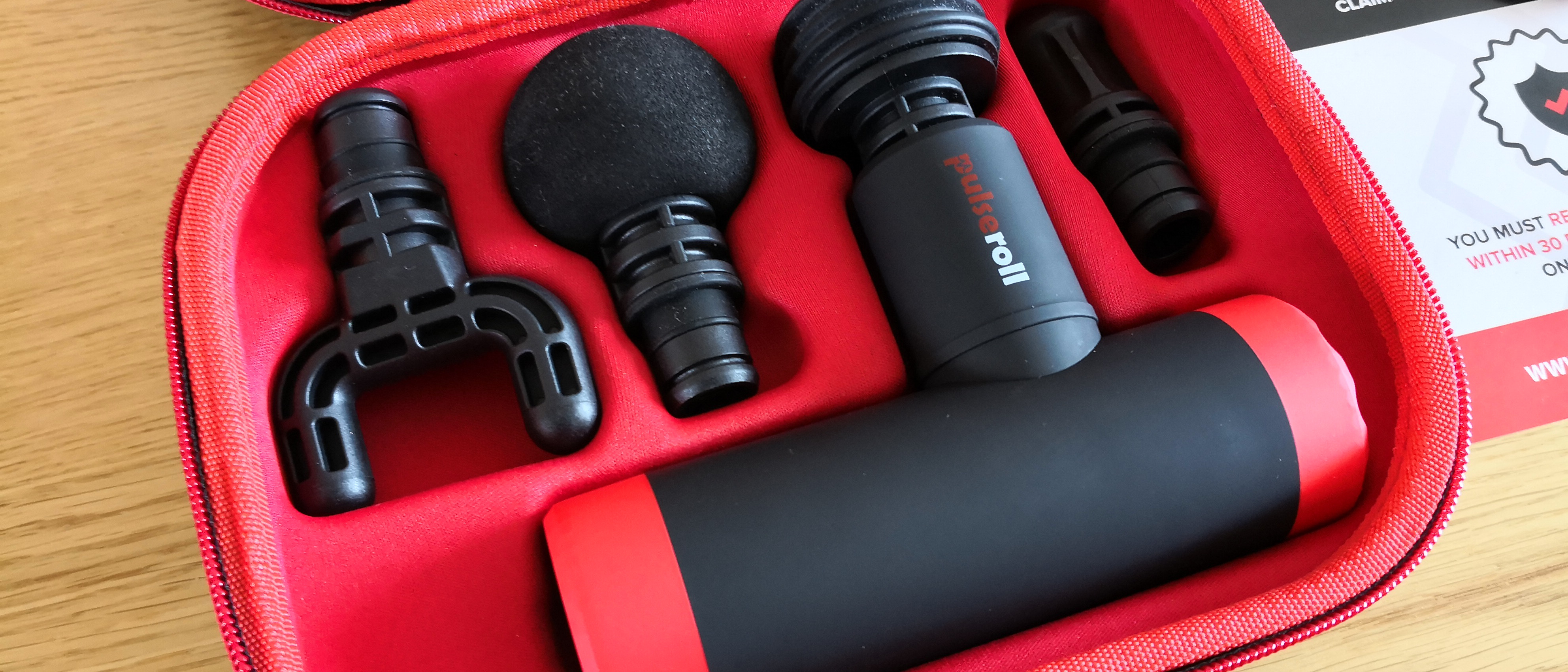TechRadar Verdict
We’re quite smitten with the Pulseroll Mini Massage Gun, thanks to its undeniably compact design, impressive punch, and battery life that makes it well worth packing into your bag for a long trip. At just 1kg, it's not going to weigh down your luggage too much either. The selection of heads ticks all the usual massage boxes, battery life is as good as any of the many rivals out there and the instructions are plain and simple to understand. Overall, this is a good value package that comes highly recommended.
Pros
- +
Compact and lightweight
- +
Very respectable performance
- +
Standard issue head selection
Cons
- -
Power/speed button take a little getting used to
- -
Basic, so no heated heads
Why you can trust TechRadar
30-second review
If you’re looking for a compact massage gun that's light enough to be packed into a backpack or suitcase, the 0.6kg Pulseroll Mini Massage Gun is an ideal candidate. It features four different power settings, comes complete with four standard issue massage heads that work using the common push-fit configuration, and its 7.4V battery can keep the gun working for up to three hours (or six if you use the most frugal setting). A full recharge takes around three hours too.
With massage delivery that tops out at 3,000ppm (percussions per minutes), the Pulseroll Mini Massage Gun does a great job, and is just as fast as our current top-rated massage gun, the Power Plate Mini+. We rather like its bright red and black styling, too.
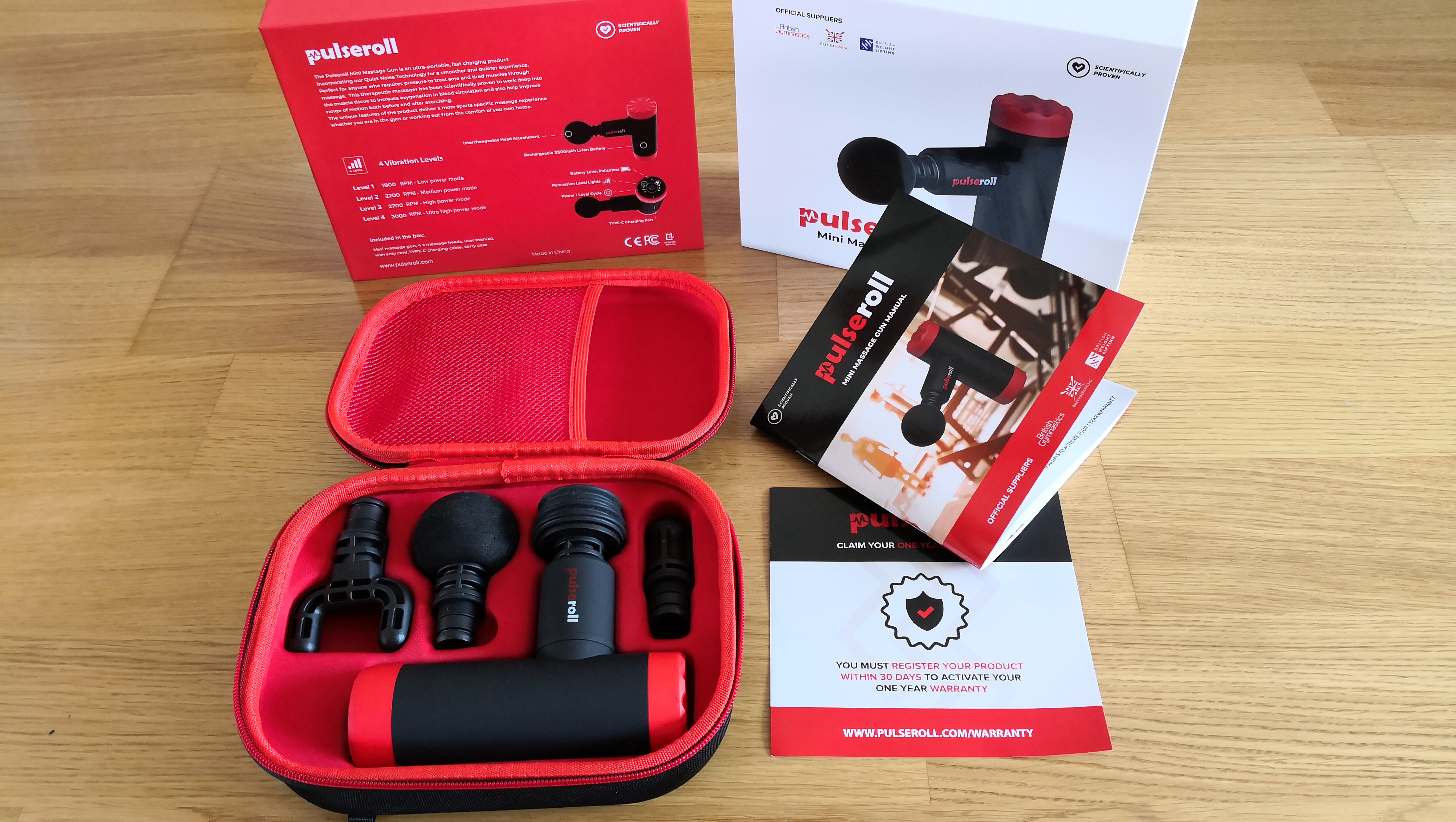
Price and availability
The Pulseroll Mini Massage Gun is on sale now, and has a recommended retail price of £129.99 (about $170 / AU$230). You can buy it directly from Pulseroll, but it's also available internationally from a wide range of third-party stores, including Amazon.
Although not cheap, that's a reasonable price for this type of compact massage gun. For comparison, the reliable Renpho R3 Mini Massage Gun is $139.99 / £119.99 (about AU$190), while the versatile Power Plate Mini+ is $179.99 / £179.95 (about AU$250).
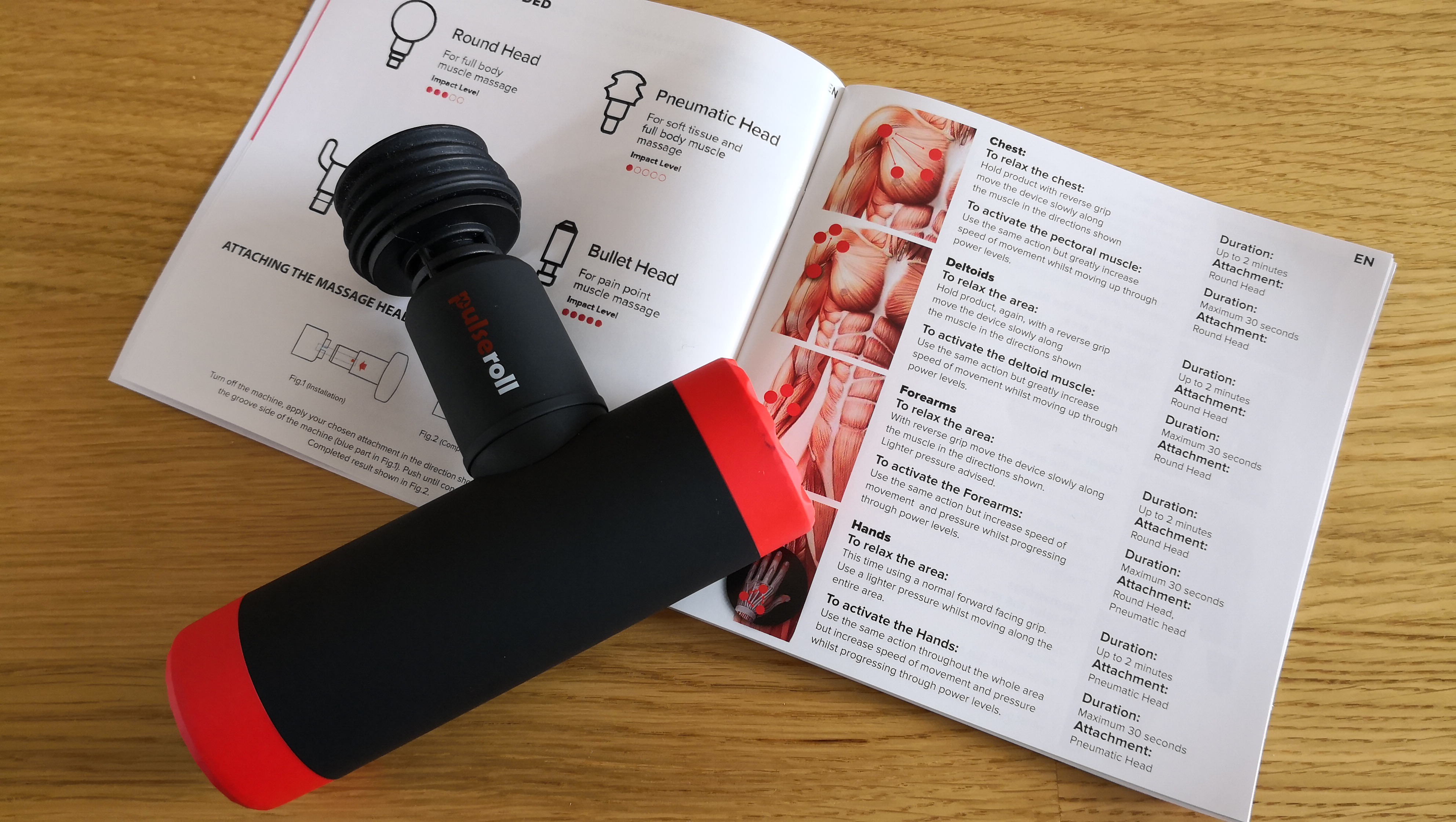
Design
Massage guns follow a fairly common theme in the design department, but the downside with some models is their bulk. Not so the Pulseroll Mini Massage Gun, which (as the name suggests) offers all the usual massage capability in a more compact form. That’s a real bonus if you like to take your massage gun with you on your travels, to sports events and races, or to the gym, so it’s there when you most need it.
The gun arrives in a stout cardboard box and inside that there’s a vinyl zip-up carry case, complete with logo and carrying strap. Unzip the pack and you’re greeted by a very bright red interior, which is quite funky. The 14cm high gun sits there with one head already attached, with three other massage implements packaged alongside, together with a USB-C charging cable.
There’s a full color manual too, which is tucked inside a net on the top half of the case and proves hard to remove. It’s almost like it’s too big for the size of the net that holds it. In fact, only about the first 10 pages are for English-speaking users, while the rest caters for other languages. Nevertheless, the instructions are clear enough, and the colour anatomical illustrations and massage guidance are pretty good too. A one-year warranty card completes the package.
Sign up for breaking news, reviews, opinion, top tech deals, and more.
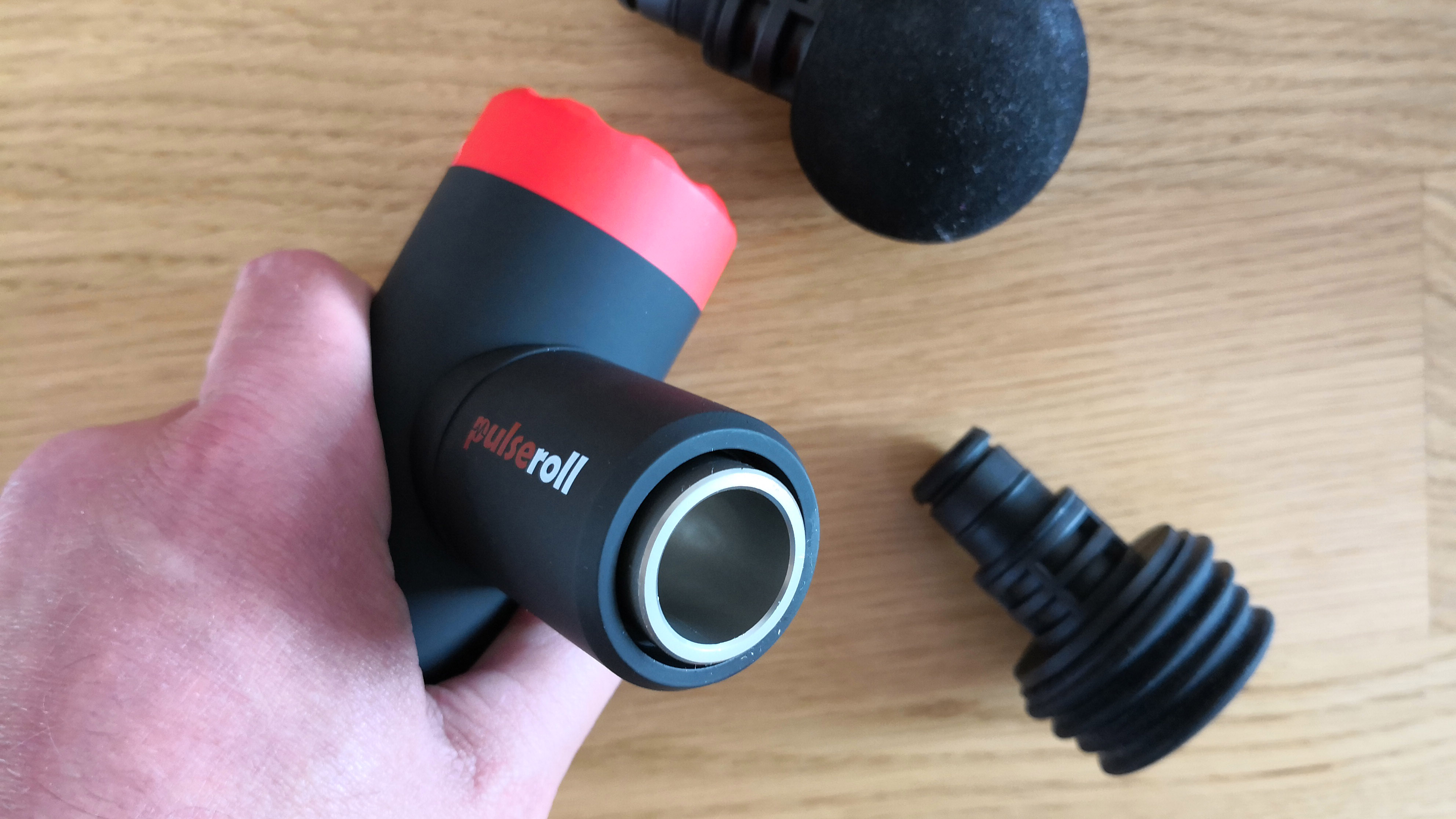
Performance
It might be small, but the Pulseroll Mini Massage Gun is a solid enough performer and features a 40lb stall force. Operating it is very simple, with a clearly marked power button on the base of the handle. Underneath that is a USB-C charging port.
Press the power button for two seconds and you’ll see a power level/cycle displayed on one side in small green LEDs. Intensity can be increased by pushing this again. Level 1 delivers 1,800ppm (percussions per minute), level two 2,200 rpm, level 3three 2,700 rpm and level four 3,000ppm – equal to many of our top-rated massage guns, including the HoMedics Pro Physio Massage Gun. This is supplemented by battery level indicators on the other side.
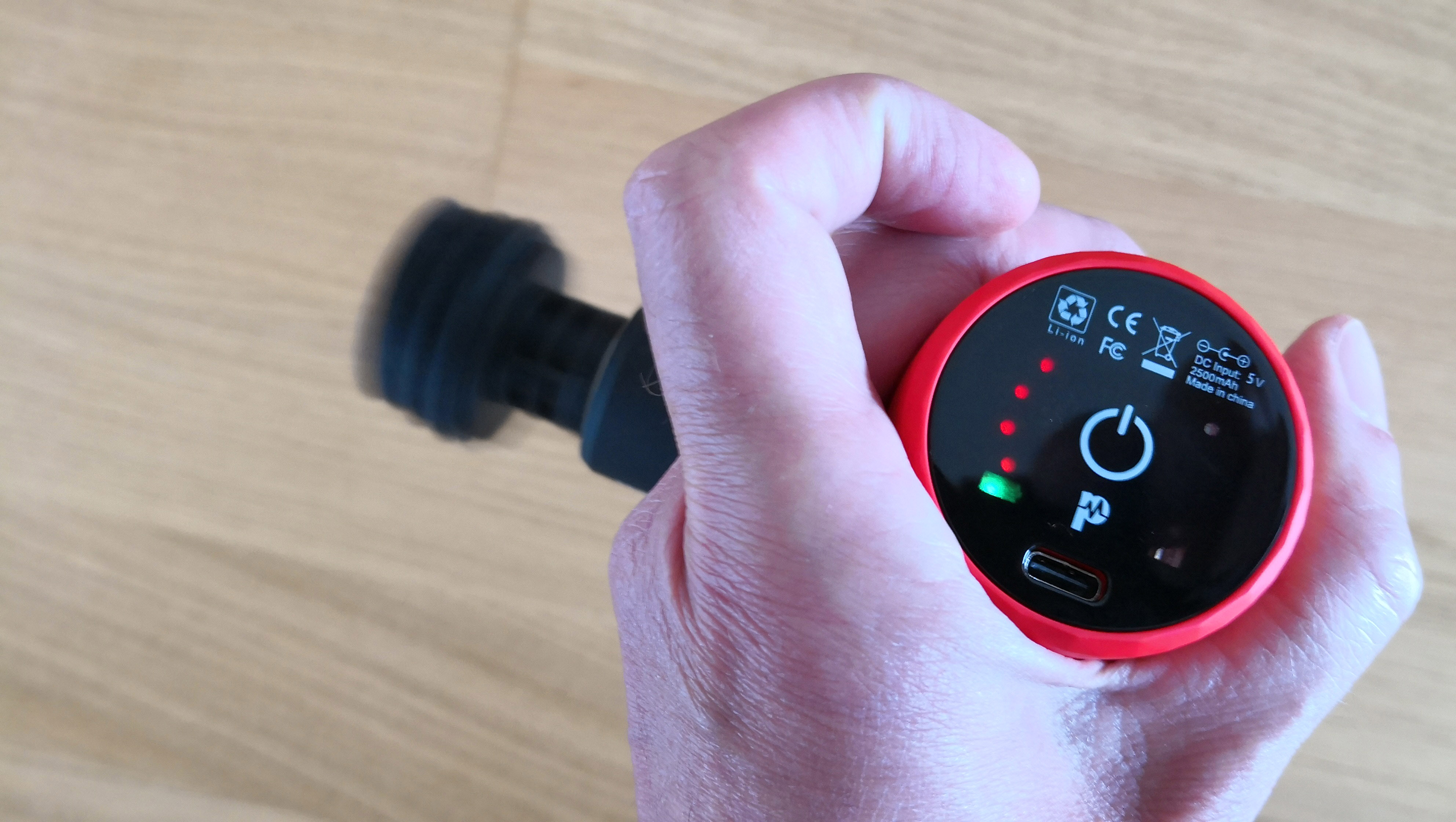
The interchangeable head attachments work on the common push-fit method and we had success with these while thankfully not getting any dropping out mid-massage. We got dependable results using the round head for full body duties, the pneumatic head for soft tissue areas while the fork-style spinal head did a good job on the stimulating massage front. A familiar-looking bullet head proves as good as ever for pain point muscle massage.
The touchscreen-style speed/power button works well enough, though it can be a little tricky to achieve the right level if you’re still getting to grips with it. Overall though, the design allows for easy and prolonged massage sessions while the end result is everything you’d expect from such a machine. In fact, if anything, it’s as good as bulkier full-size models on the market.
First reviewed April 2022
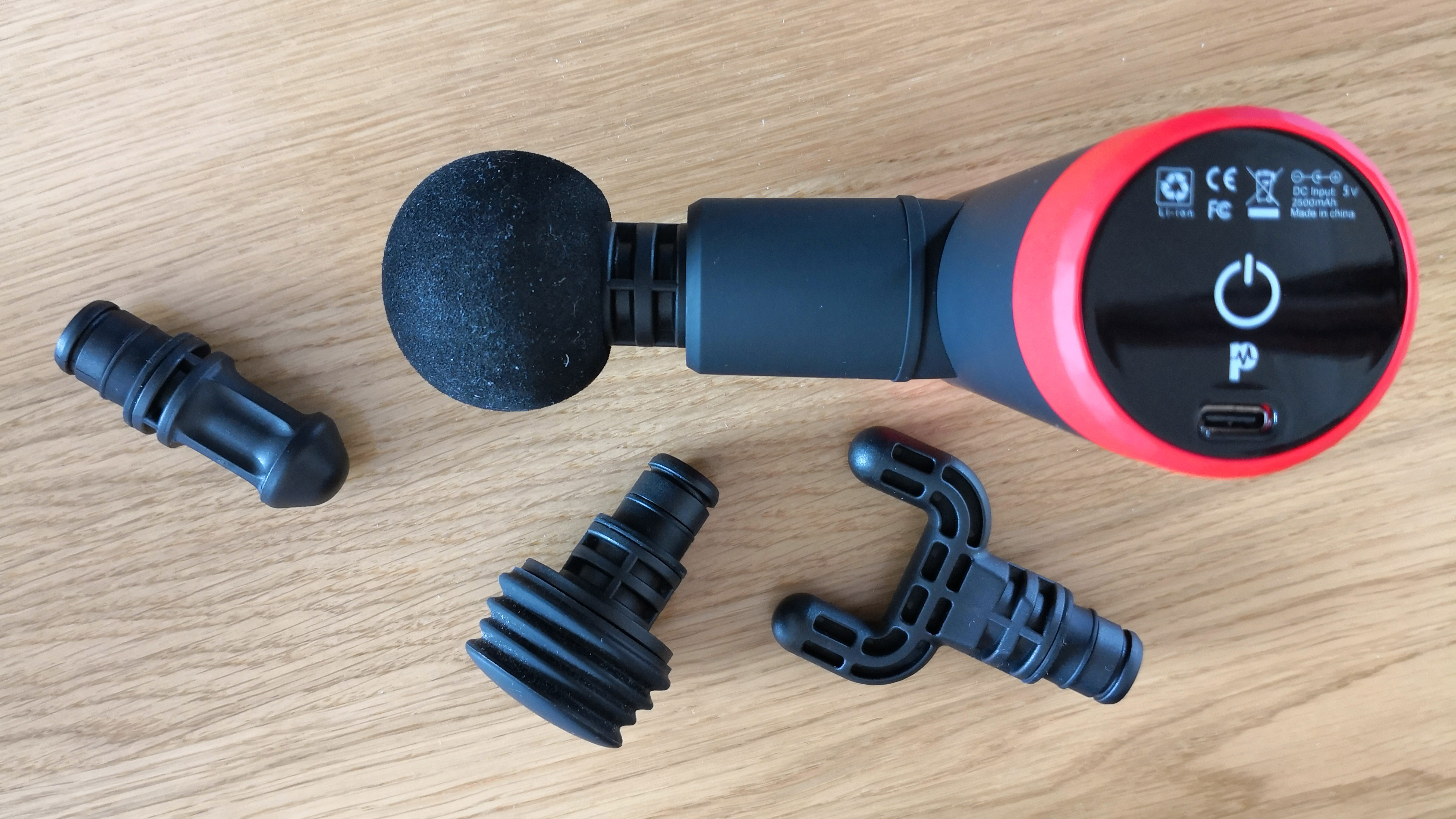
Buy it if
You’re after a fully portable massage gun
This is just that, presented in a polyester carry case tailor-made for gym bags or suitcases.
Basic massage is all you need
There are four heads that cover the essentials, but you won't get extras like heated or chilled attachments.
You want easy charging
Plug the Pulseroll Mini Massage Gun in using the USB-C cable supplied and it can be fully charged in around three hours.
Don't buy it if
You need a professional massage gun
It’s billed as offering pro-level massage, and it’s certainly no slouch, but this is a compact, portable unit and wouldn't be ideal if you're looking for something to use as a personal trainer.
You want an app for guidance
We saw no evidence of a supporting app, but there are instructional videos online.

Rob Clymo has been a tech journalist for more years than he can actually remember, having started out in the wacky world of print magazines before discovering the power of the internet. Since he's been all-digital he has run the Innovation channel during a few years at Microsoft as well as turning out regular news, reviews, features and other content for the likes of TechRadar, TechRadar Pro, Tom's Guide, Fit&Well, Gizmodo, Shortlist, Automotive Interiors World, Automotive Testing Technology International, Future of Transportation and Electric & Hybrid Vehicle Technology International. In the rare moments he's not working he's usually out and about on one of numerous e-bikes in his collection.
